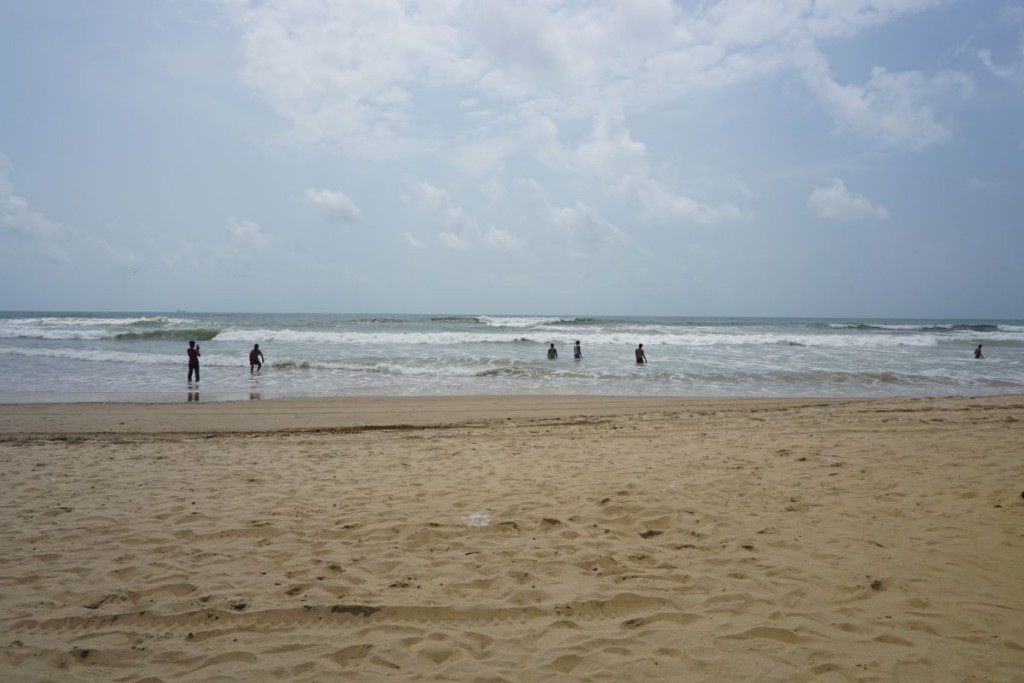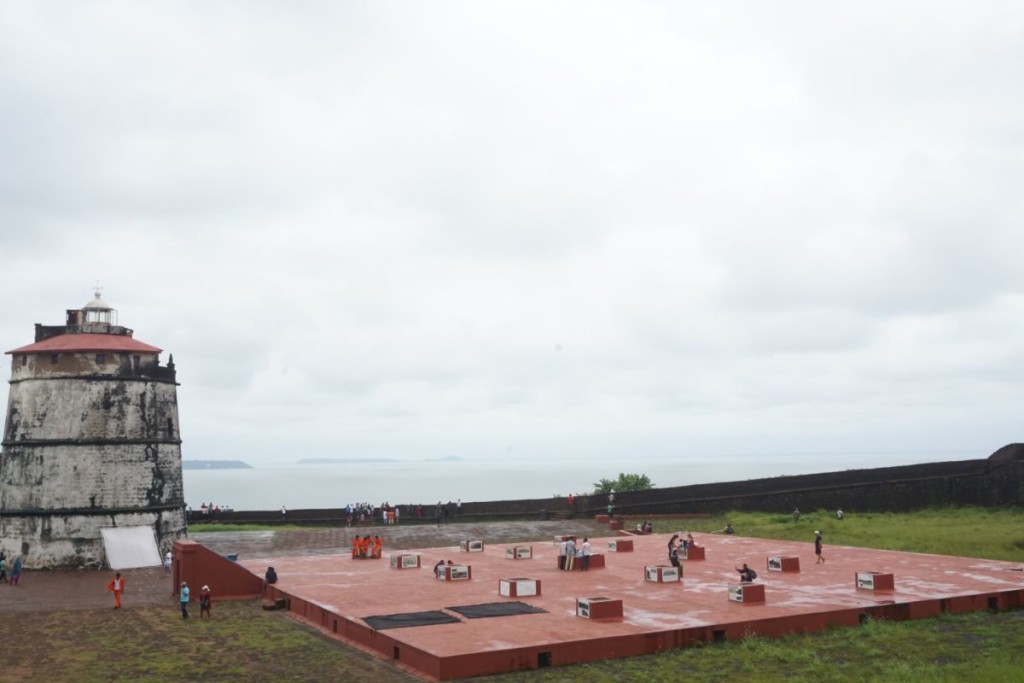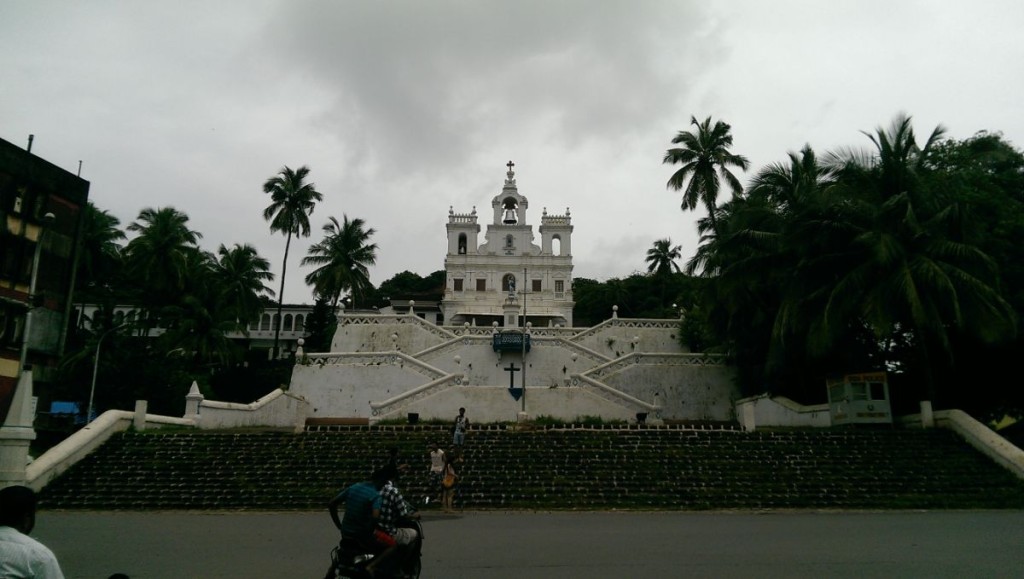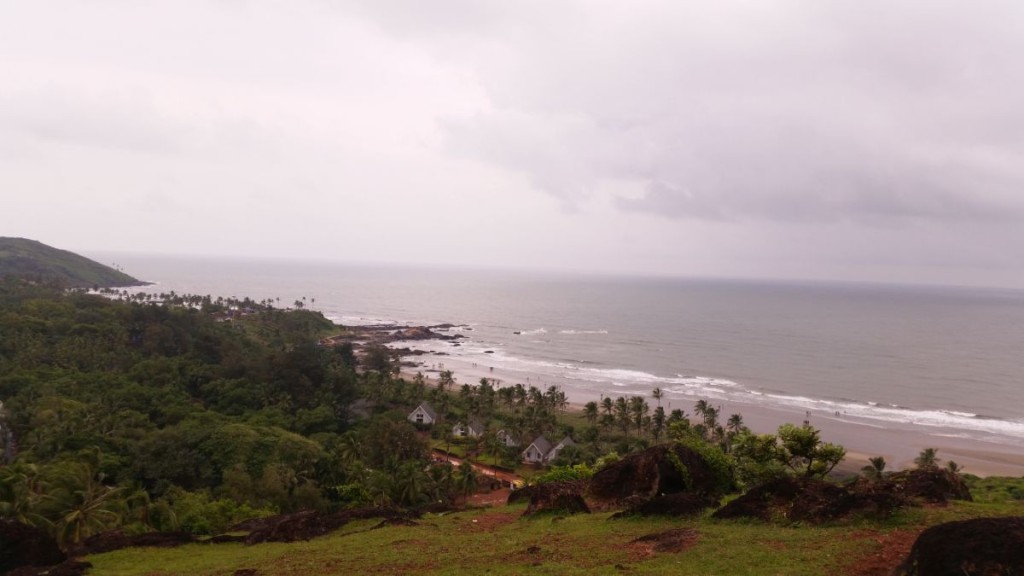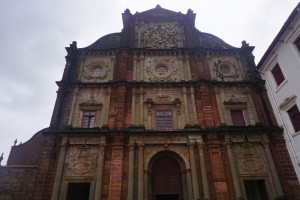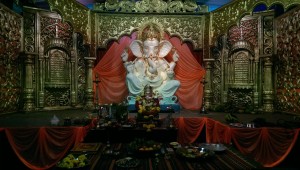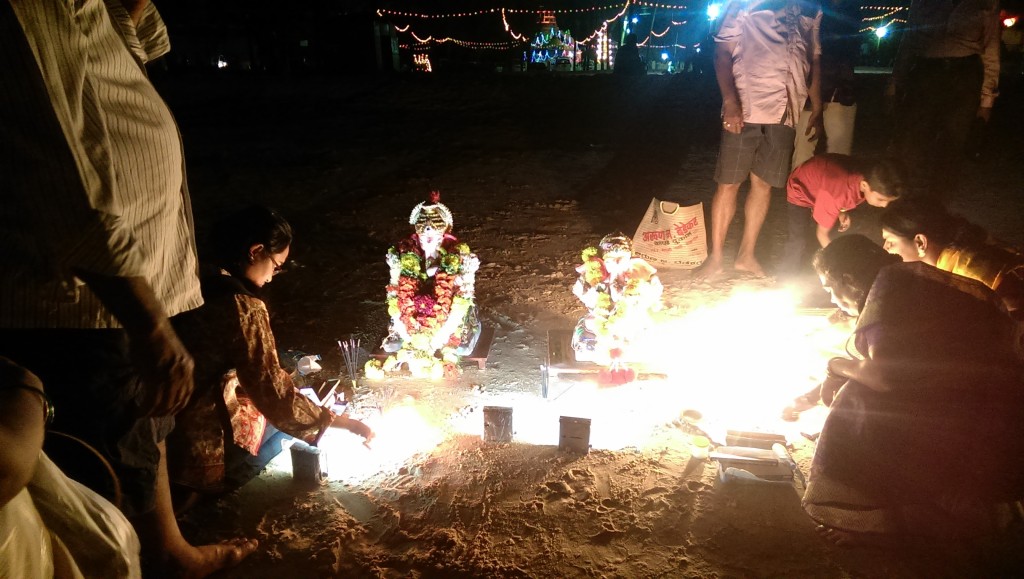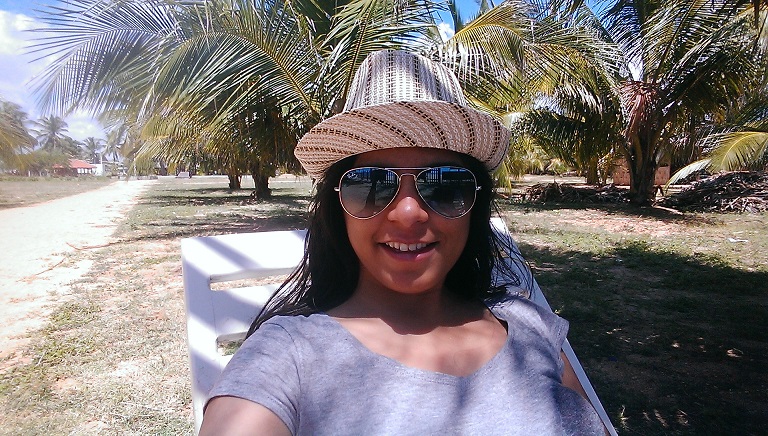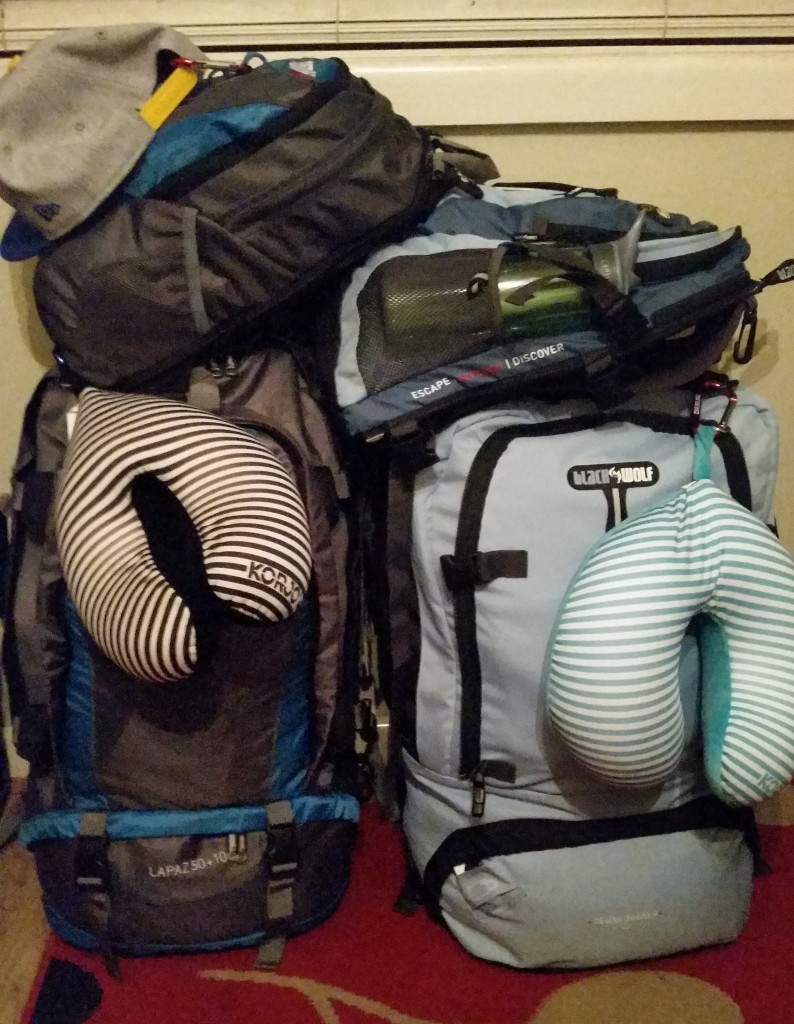Charley Chaplin arrival
From Goa we planned on seeing Kerala in 5 days. We headed to the railway station to board our 7pm train to Kochi, only to realise it was running late by more than 2 hours. While waiting, we spent time talking to random people, playing with dogs and drinking tea. If it couldn’t get worse, the heavens opened 15 minutes before the train arrived.
Once on the train, we swapped seats with a wonderful old couple. In the morning, we spent our time admiring the beautiful Kerala country side and asking fellow travelers when would we reach our destination as the Indian trains don’t do announcements within the train.
Finally, we made it to Aluva station in the rain and met Mr Shyam, our driver for next 4 days. On the way to our first destination Munnar, we stopped for lunch and thoroughly enjoyed the taste of traditional Kerala meal served on a banana leaf plate. Yum!!!
The Kerala hills
The drive to the hills was an amazing ride. Mr Shyam was an excellent driver but also an Indian one, which meant he cruised at min. 60km/hr throughout the journey whether it’s a flat road or mountain curves. We concentrated on the view and hoped for the best!
We saw a few waterfalls along the way and stopped at a spice garden. This was our first visit to a spice garden and a guide showed us around the plantation. We saw some common spices, special herbs and trees. We also tried fresh spices and realized what we had been missing out on. At the end, we couldn’t resist buying some spices for our moms :)
In the evening, at driver’s recommendation we headed to Punarjani Traditional Village. There we watched a Kathakali perfomance which is the traditional theatre of Kerala. It was extremely refined and the story involved Lord Vishnu and Godess Laxmi. Having said that, we didn’t really understand what was going on. :/
We then watched a performance of Kalaripayattu, the traditional martial art of Kerala, and we were amazed! Although it was only a performance, the fighters were no actors, they fought barehanded, with sticks or even with sharp weapons. We came out thanking the driver for his recommendation!
Here is a mashup of various scenes from the performances –
The next day, We started at 9am to see highlights of the Munnar area. We saw a beautiful dam, a picturesque lake, mighty waterfalls and tea estates. This was definitely turning out to be one of the highlights of our trip so far.
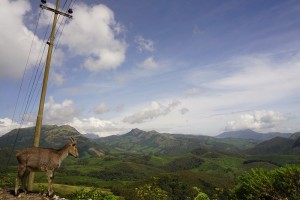 We also visited the Evaildukam National Park. It was set up in 1971 but efforts had been going on for a century to stop the killing of mountain goats, Nilgiri tahr, and other animals in the area. The national park sits around the most amazing hills and tea estate patterns form an unique picture of Munnar which is beautiful beyond belief. One could forget they are in India and be in Scotland or New Zealand.
We also visited the Evaildukam National Park. It was set up in 1971 but efforts had been going on for a century to stop the killing of mountain goats, Nilgiri tahr, and other animals in the area. The national park sits around the most amazing hills and tea estate patterns form an unique picture of Munnar which is beautiful beyond belief. One could forget they are in India and be in Scotland or New Zealand.
To finish the day off, we visited a waterfall in the middle of Tata Tea Estates. We met Aunty Mary, who was the owner of a tea shop just next to the waterfall. We got talking to her and realized that although she and her family have enjoyed living in a scenic spot for 5 generations, they suffer from poverty and find ways to earn more. They grew spices and worked at the Tea plantation but that wasn’t sufficient. This got us thinking and all we could say is – life is tough and the grass is always greener on the other side.
Tip: We recommend hiring a driver for a day or two to see Munnar and all the hidden gems. The transport to commute from one spot to another is very expensive. Furthermore, the driver will ensure he takes you to all the regular tourist spots.
Backwaters
We said goodbye to the hills next morning and started driving to the lake district. On the way, we saw Malayees (Keralites) starting their day and kids going to school.
The Kotianad area and Allepey area have a natural lake between them which is fed by the water from Kerala’s rivers and the sea. The British added to this area by making islands and bunds for farmland. This area is now the food bowl of Kerala and the canals, bunds, islands and the lake make up the backwaters of Kerala.
Our driver searched and found the houseboat drop off next to a tiny canal in the Kumarakom area. Boarding the houseboat, we were shown our bedroom, the living area and explained the yummy menu. After this, we got moving and enjoying the beauty of Kerala.
If we thought Munnar was the highlight of Kerala, we were to be proven wrong. The houseboat on a lake against the backdrop of coconut trees and a blue sky is a sight to behold. Moreover, The pace of the houseboat is slow enough to enjoy the sights but fast enough to not be bored.
The beauty of this part of Kerala just can’t be explained in words. Although coconut trees, banana trees, lakes and sea birds exists all over the world, in Kerala all these come together and create a postcard like image everywhere.
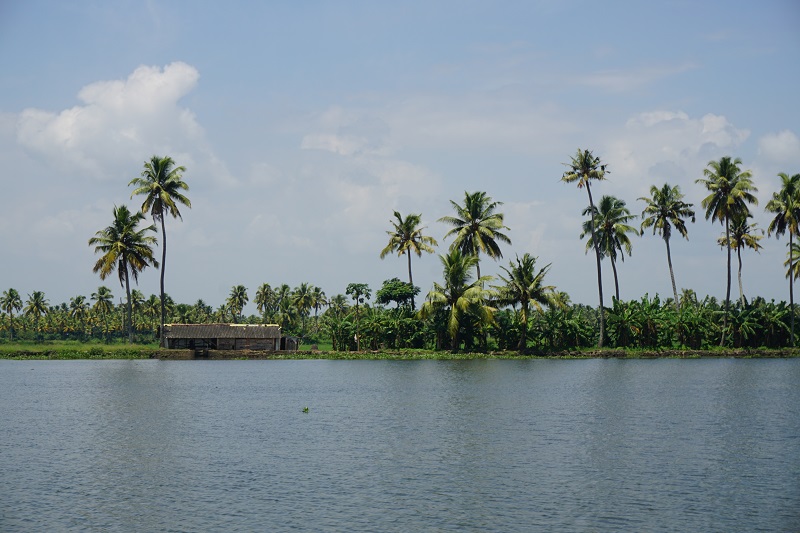
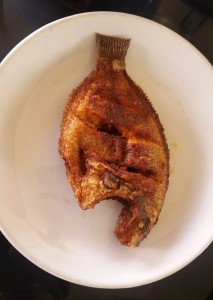 The staff on board the houseboat included a navigator and a chef. However, they swapped roles so many times that we couldn’t tell who was who. The food they made was absolutely delicious and I got to try the state fish of Kerala, karimeen, which was fried and tasted amazing. On the other hand, they were like an aunty who over fed you. The portion sizes were huge and we mostly left half the food. Sorry mum!
The staff on board the houseboat included a navigator and a chef. However, they swapped roles so many times that we couldn’t tell who was who. The food they made was absolutely delicious and I got to try the state fish of Kerala, karimeen, which was fried and tasted amazing. On the other hand, they were like an aunty who over fed you. The portion sizes were huge and we mostly left half the food. Sorry mum!
We heard about a local drink called Toddy, which is made from young coconuts. Although not alcoholic, alcohol can be added to make it a liquor. We wanted to try it so we told the navigator and he stopped us at a Toddy shop along the waters edge. The taste was sweet and sour with a natural fizz. It was refreshing but not our cup of coconut water!
All houseboats must dock at 5:30pm before sunset and our boat also docked along a bund with a power source for the night. We went off shore to see the sunset and we’re stunned at the beauty. It was a beautiful sunset with paddy fields, coconut trees and the backwaters. Life was becoming so still with birds and fishermen all going home.

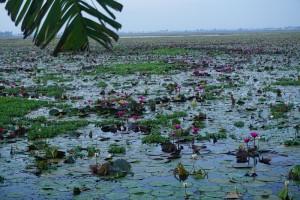 The next morning we woke up early for the sunrise which was equally as beautiful. On the contrary, everything was getting more hectic. Birds were flying flying out, fishermen were getting out to catch fish and the local ferry service was picking up schoolkids and workers for the new day. Within this chaos, we realized that an empty field next to the
The next morning we woke up early for the sunrise which was equally as beautiful. On the contrary, everything was getting more hectic. Birds were flying flying out, fishermen were getting out to catch fish and the local ferry service was picking up schoolkids and workers for the new day. Within this chaos, we realized that an empty field next to the
bund had water and some flowers. Upon closer inspection, we realised that we were looking at blooming water lilies both pink and white as far as the eyes could see. Picturesque!
Cochin
Our next stop in the tour was Cochin also known as Kochi. This city was and has been a prominent coastal city in India. It had been trading in spices and ivory for thousands of years. 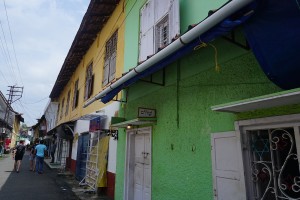 The result of this trade is a mixed culture and population. Our first stop was the Dutch Palace and the Jew Town Market.
The result of this trade is a mixed culture and population. Our first stop was the Dutch Palace and the Jew Town Market.
Unfortunately, the synagogue was closed for a Jewish holiday and we didn’t shop for anything – less money and no space. The palace, however, has an amazing history and knowledge about the Cochin royal family especially the matrilineal system they followed.
 We ended our tour of the Old Cochin city by visiting the Cochin beach and the Chinese nets. The chinese nets are the result of trade between China and Kerala. The nets are connected to ropes, planks of wood and stone weights. They are lowered every 5-10 minutes and is an amazing sight to see as different nets go up and down and the same time. At the time of our visit, it was off season for fishing and the fishermen were mostly gathering small fish and asking for donation from tourists. The donation price is around Rs 50 or $1 US and they let you pull the net along with other fishermen for the price. Money well spent!
We ended our tour of the Old Cochin city by visiting the Cochin beach and the Chinese nets. The chinese nets are the result of trade between China and Kerala. The nets are connected to ropes, planks of wood and stone weights. They are lowered every 5-10 minutes and is an amazing sight to see as different nets go up and down and the same time. At the time of our visit, it was off season for fishing and the fishermen were mostly gathering small fish and asking for donation from tourists. The donation price is around Rs 50 or $1 US and they let you pull the net along with other fishermen for the price. Money well spent!
In the evening, we visited the Ernakulam Shiva temple to get some peace and blessings. Since the entire precint was not open till 5pm, we decided to wait inside the main temple. It was our first visit to a Kerala Hindu temple and we watched people’s devotion to the deity as they prayed and circumnavigated the inner precinct. It was a sombre experience for us!
On the contrary, we had been wanting to watch a South Indian film all along the time we were here. However, we never had the chance in Hyderabad. Therefore, we went to watch Loham, a film starring a massive star in Kerala, Mohanlal. The film was a thriller and there were no subtitles. We could guess the general plot of the film but the ending left us a bit confused.
Following advice from my best mate, Bharat, who happens to be from Kerala state, we decided to stay an extra day in Cochin. We took a bus to the Hill Palace Museum, which was another palace of the Cochin royal family. The museum had a great collection of the art and culture of Kerala and India.
Our next destination was the Chottanikkara temple of the Goddess Durga. Did we tell you that we can’t stand autorikshaw drivers? Well here is a classic case why – we took the auto to the temple from the museum and the driver started the meter. Upon getting there, the guy claims some special tax that he’s being charged for going outside the city. We argue with him and threaten to take him to the police, but in the end paid him extra and left the scene.
The temple itself was a huge precinct with many smaller temples and a pond inside it. After seeing all the temples and the pond, we started noticing something strange about the people at the temple. The temple seemed to have alot of mentally ill individuals with families. We had accidentally stumbled upon a temple where people bring family members under a spell or with ‘spirits’ inside them. These individuals were rolling allover the floor, jumping or in a trance chanting the name of the deity. Strangely, the families didn’t feel embarrassed or sad over the condition of the mentally ill. This freaked Shruti out but we stayed a bit longer for the evening aarti. We were glad we did as Kerala temples have oil lamps outside which get lit for the evening and the whole temple appears like a giant lamp. After the Aarti, we left the area in the rain and that was the end of our trip in Kerala.
Summary
Transport
We covered a lot of distance in Kerala using a tour by A life time trip. It is possible to individually visit these places or take public transport between them. Buses are available from government bus stand, but hiring a car is definitely easiest way to commute between these locations.
Once in a major city, there are buses, taxis and autorikshaws available. We traveled in the govt. buses and there was no issue whatsoever.
Summary
When we were heading to Kerala, we said to ourselves – let’s see if Kerala really is God’s Own Country. And, after spending some time traveling around, we must say, it definitely is. This Indian State has amazing hills, waterfalls, lakes, backwaters and lot of history. Kerala is definitely a very pretty state that provides a complete package of natural beauty.
Another thing we noticed here was the use of Hindi. We were really surprised to see almost everyone could converse in the national language. We had always heard that hindi is not used much in south and that’s not true!
Lastly, the culture and food of Kerala is different to other places we have been. This state has a huge population of Muslims and Christians. Apart from the attire, we couldn’t really tell the difference between people. They all have one culture above their religion, and that that they are all Keralite. The rice used in this state is different as well and we haven’t see it anywhere.
We definitely recommend visiting Kerala. As our houseboat navigator said, come in December and Kerala will be even more green and cool.
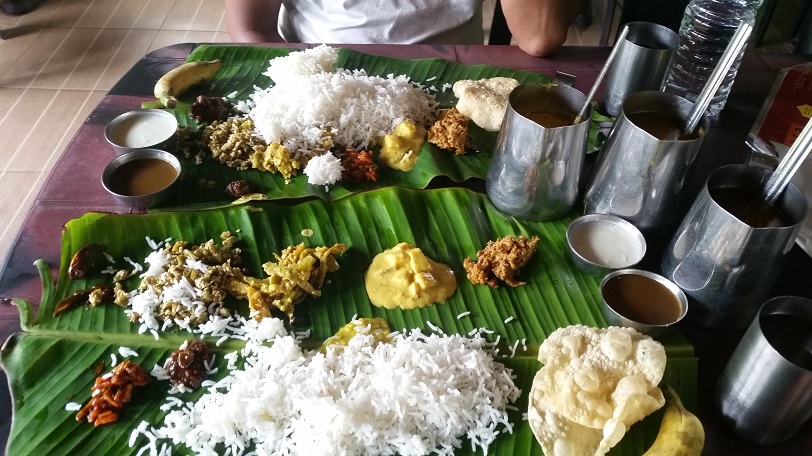
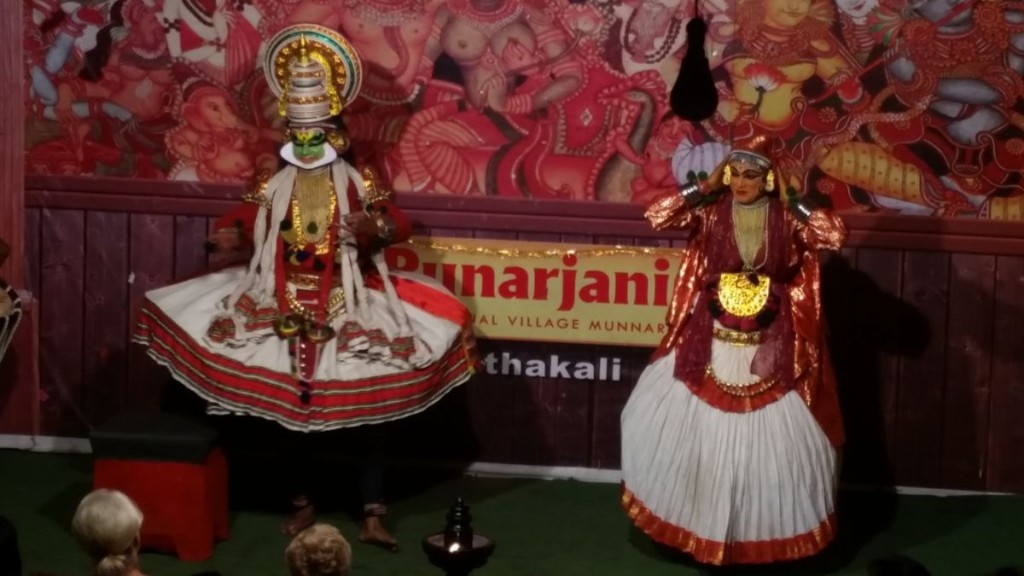
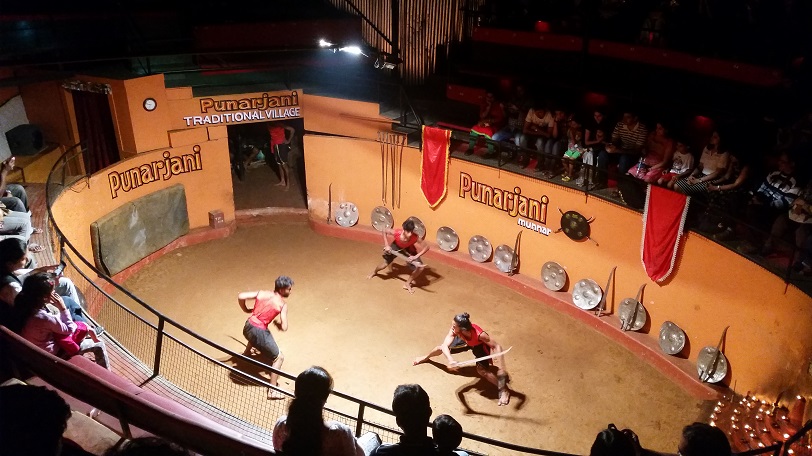
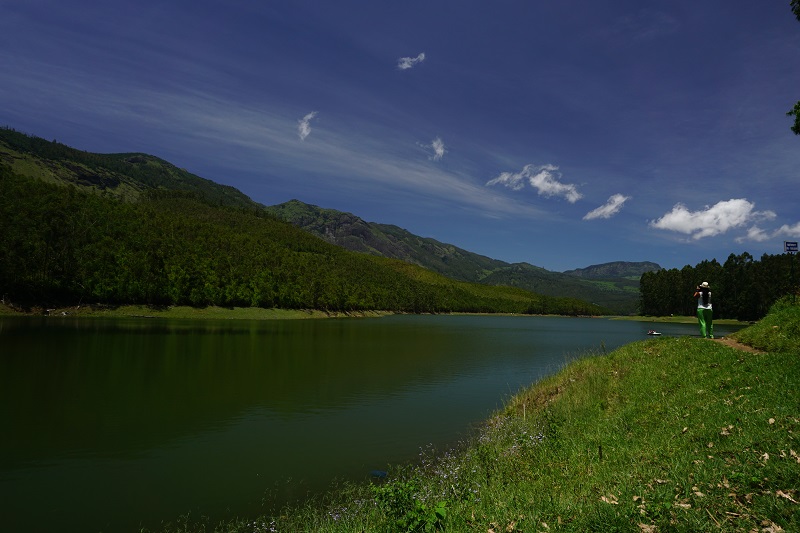
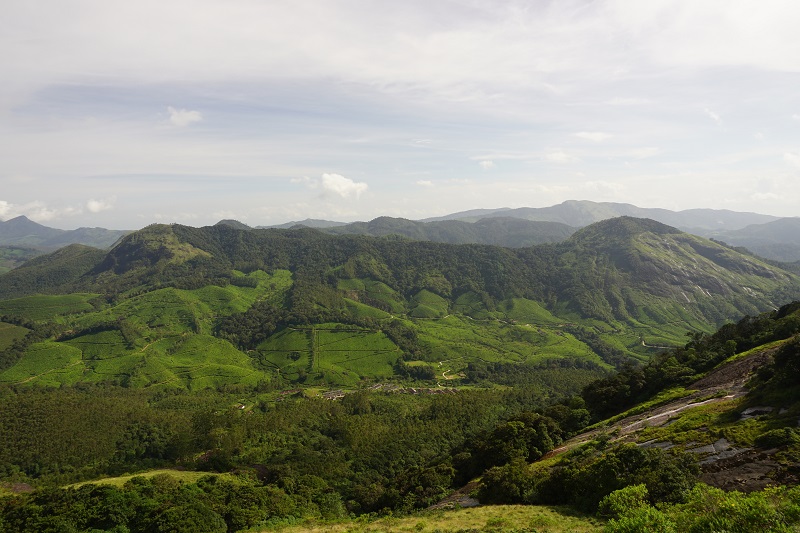
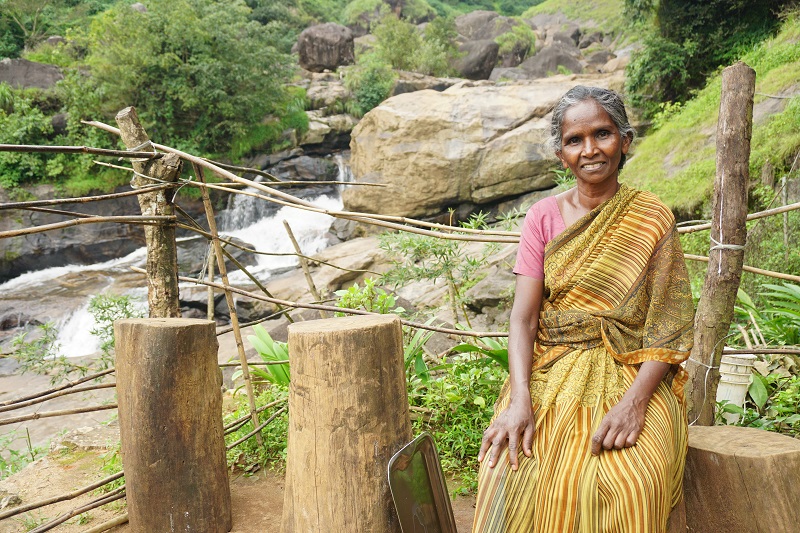
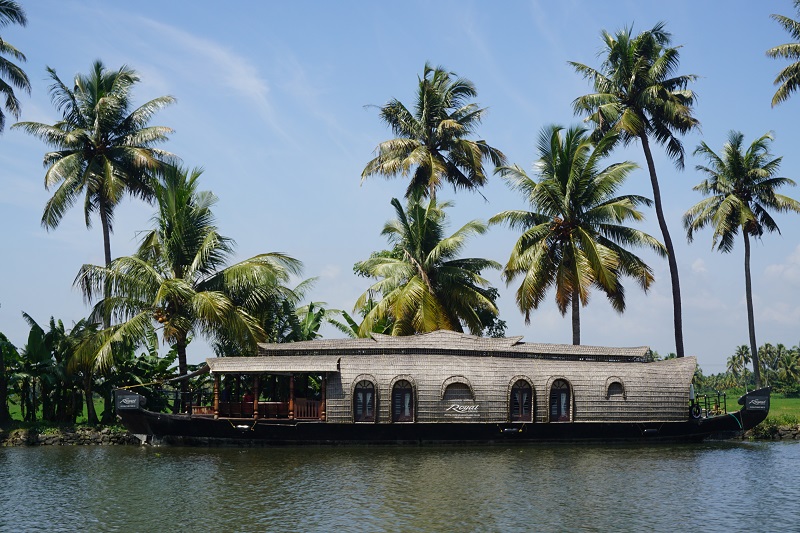

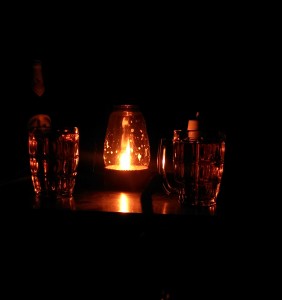 Goa’s beaches aren’t as clean and pretty as Australia’s but they are certainly very lively through the day and night. Each beach is known for it’s music genre. Baga and Calangute beaches are big for Indian tourists so most beach bars played
Goa’s beaches aren’t as clean and pretty as Australia’s but they are certainly very lively through the day and night. Each beach is known for it’s music genre. Baga and Calangute beaches are big for Indian tourists so most beach bars played 